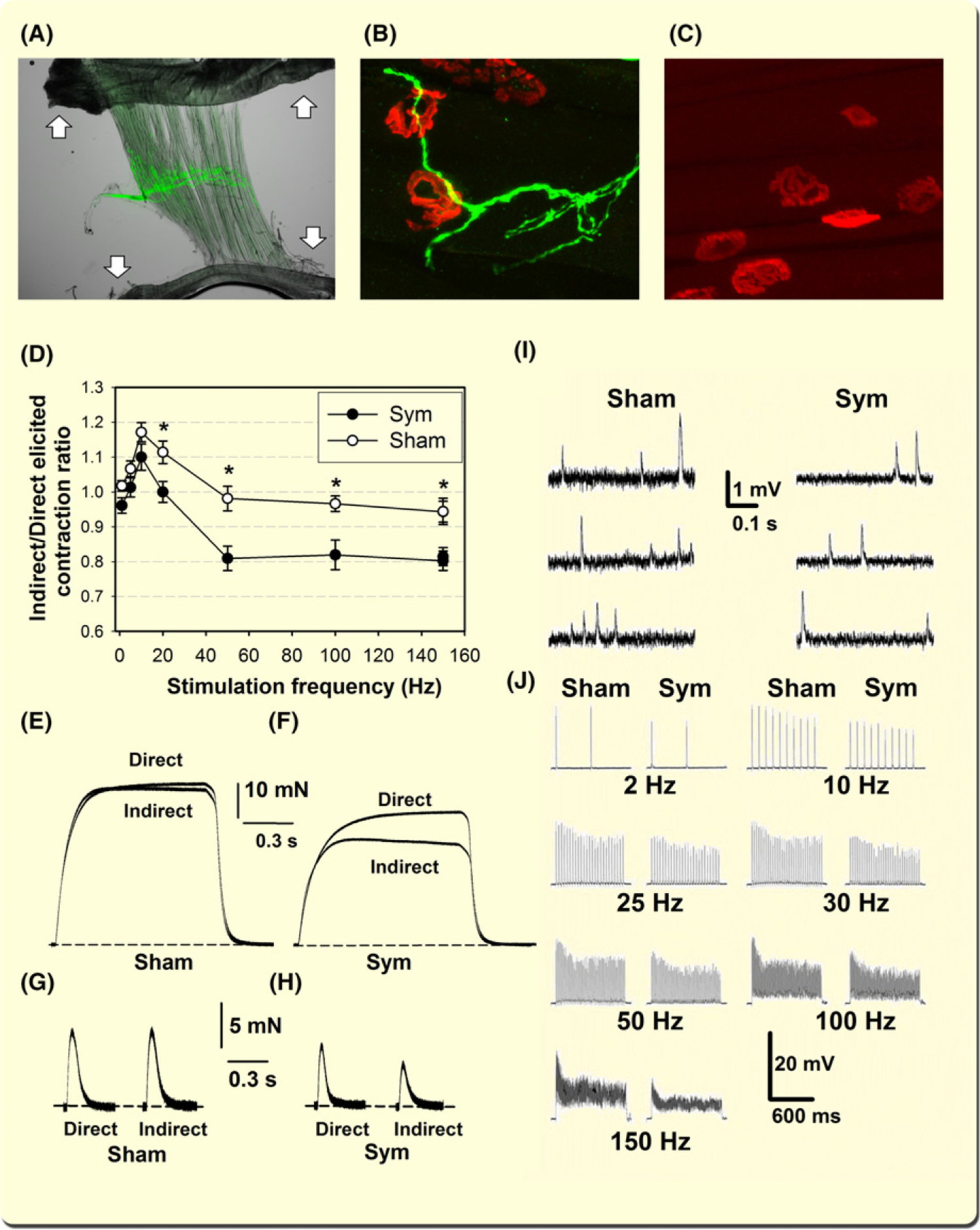FIGURE 3.

Sympathetic innervation regulates lumbricalis muscle innervation, tetanic muscle force generation, and the functional integrity of neuromuscular transmission. A, Plantar nerve-lumbricalis muscle preparation. Arrows show muscle tendons. The green fluorescence corresponds to transgenic Thy1+ in the peroneal nerve. B, Confocal z-stack image of TH+ axons and AF555-BGT staining in the lumbricalis muscle from a sham mouse treated with iDISCO.118 C, Lumbricalis muscle lacking TH immunoreactivity 7 days after sympathectomy. D, Indirectly/directly elicited maximal muscle force ratio for sympathectomized and sham mice (n = 6–7 lumbricalis muscles, four mice per group) as a function of stimulation frequency. Asterisks (*) indicate statistically significant differences (P < 0.05). E and F illustrate tetanic force recorded in response to supramaximal stimulation at 150 Hz for 3 s in sympathectomized and sham mice. Dashed lines indicate the baseline. Twitches were recorded in the peroneal nerve-lumbricalis muscle preparations from sham (G) and sympathectomized (H) mice used for hig-frequency stimulation. Decreased miniature endplate potentials (MEPP) frequency and amplitude recorded in the plantar nerve-lumbricalis preparation from sympathectomized and sham mice (I). Sympathetic nervous system (SNS) ablation induces decreased EPP amplitude. EPPs recorded in the lumbricalis muscle from sympathectomized and sham mice. EPP responses followed electrical pulses evoked by nerve stimulation at frequencies from 2–150 Hz (J)
